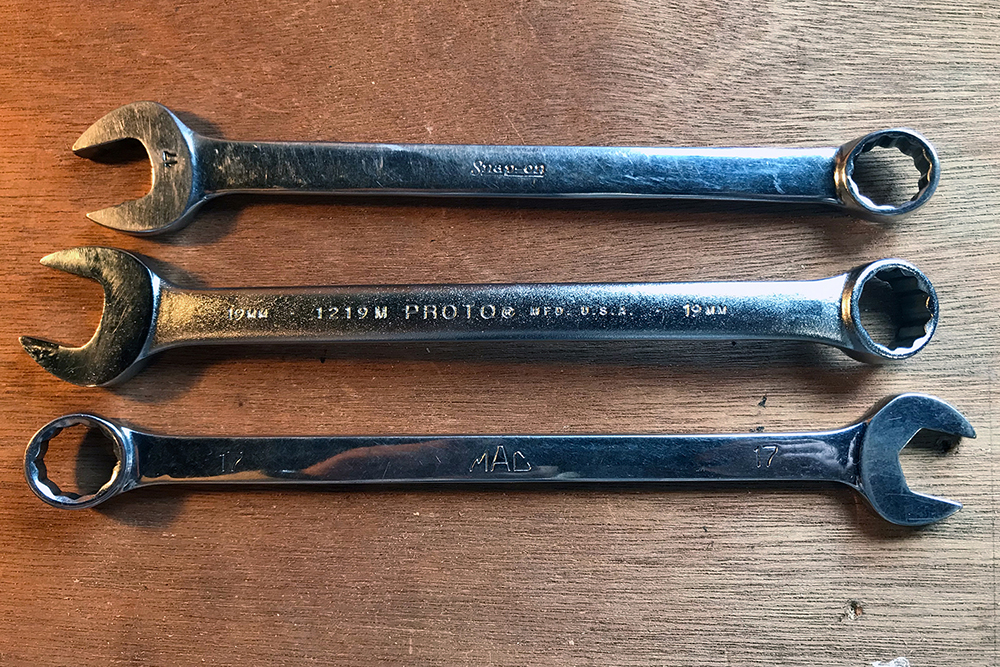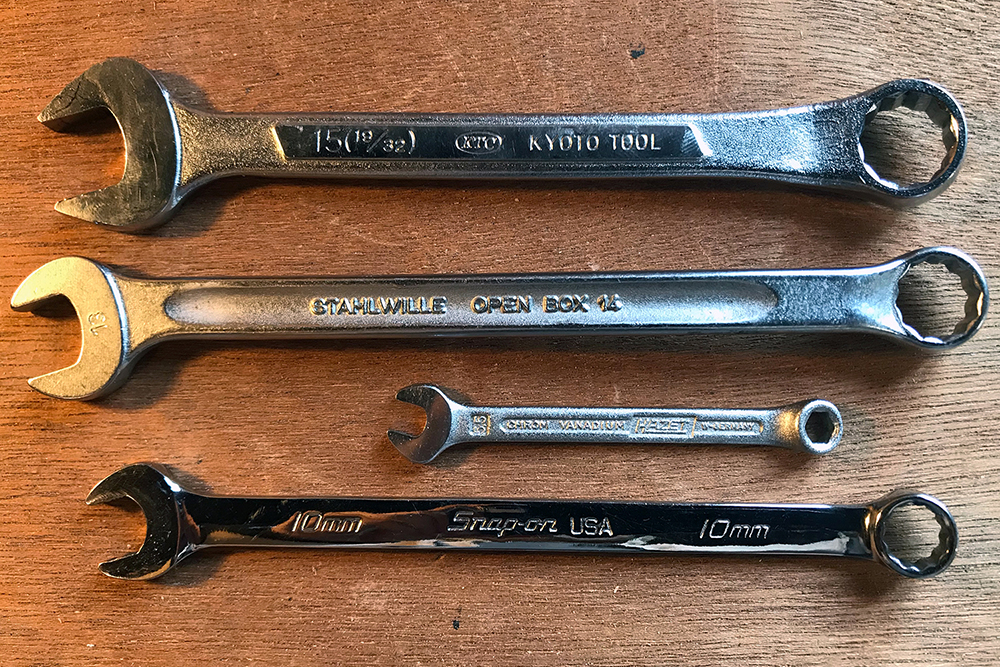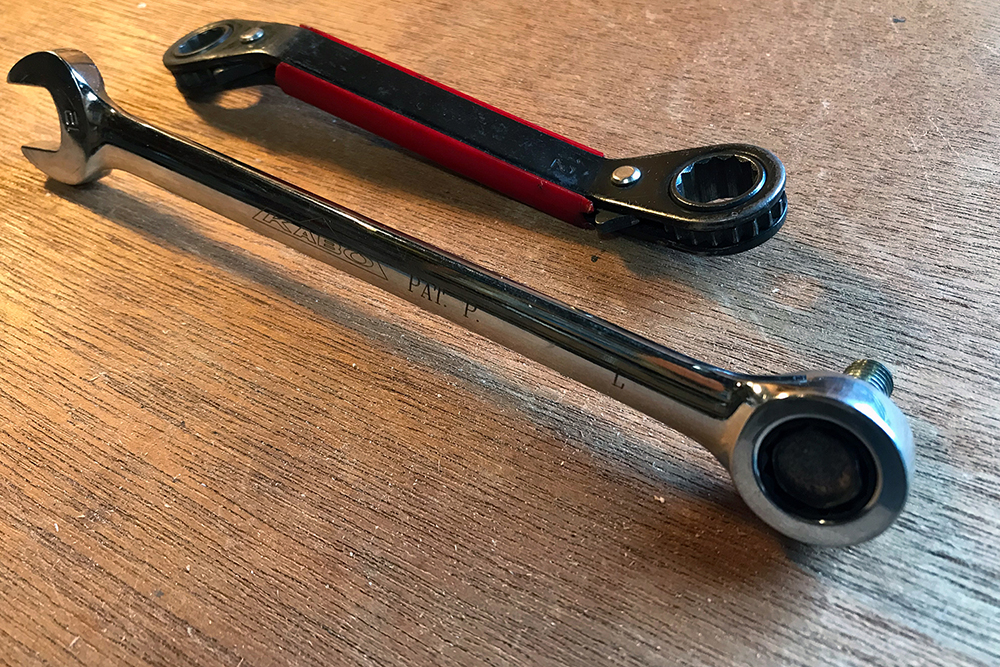Copyright GK Dynamics Inc., All Rights Reserved.

Copyright GK Dynamics Inc., All Rights Reserved.


People tend to think there’s no notable difference in the appearance of tools as they are born from functional necessities. But in fact, we can sense their appearances exude the designers’ intentions and the makers’ philosophy. Let me take as an example the combination wrench, one of the basic hand tools used for the maintenance of automobiles and motorcycles, to delve into the form of tool.

Among the three pictures attached here, the first one shows three types of American-brand wrenches. Among them, Snap-on is plated with chrome to protect against scratches, which apparently conjures the image of American foreverness. Pronto Tools, with its logo engraved in elegant letters on its pear-skin body, seems to confidently declare that it is the father of combination wrenches with a long history of production. Meanwhile, Mac Tools has an angular open-end, which makes it look like something used in the racing world. When we take a look at the handle shape of these products, Pronto Tools presents a rounder cross-section surface than Snap-on, while Mac Tools has a handle of rectangular cross section. Differences in form are evident even though they are all made in America.

The products on the second picture are made in Japan and Germany. The one from KTC (KYOTO TOOL Co., LTD.) has slightly sharp tips at its open-end, which makes it easier to reach into a narrow space. Germany’s Stahlwille bears the hallmarks of German products as it’s provided with functional benefits such as a light and easy-to-grip handle with its I-shaped cross-section, an open-end neck curved to prevent stress concentration, and a finely-tuned angle of the offset box-end. Another German brand Hazet appears simple and sturdy and presents a highly stiff image. Compared with the U.S.-made flashy wrench of Snap-on indicated at the bottom, you can easily understand these tools from Japan and Germany have simple and modest characteristics.

The third and last picture introduces products from Taiwan, a country that boasts its technology and unique ideas. The revolution in combination wrench started in 1990s with the nation’s industrial tool manufacturer Kabo Tools. Kabo’s ratcheting wrench with a gearless box rotates in only one direction. Afterward, a wrench with gear mechanism was launched by Lea Way (GearWrench) and became extremely popular. It is now regarded a basic item for wrench users. The one in the back is a so-called plate ratchet wrench, which is similar in concept to Lea Way. It’s been around for a while, but it hasn’t been much used in the field of maintenance. It can be said that new technologies prompted Kabo to produce a stylish design and create a new trend. We can learn from these examples that design revolution takes place when concepts go hand-in-hand with technologies.
Takayoshi Mugikura
Product Design Dept.
Design Director